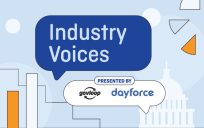According to the Department of Agriculture, food insecurity is a persistent issue in America, affecting over 12% of households. To address this, the Washington State Department of Health has launched a cloud-based initiative to enhance its Supplemental Nutrition Assistance Program (SNAP) Produce Match program. This program, which gives SNAP shoppers coupons for purchasing produce, was previously limited to physical stores. By leveraging Amazon Web Services, the state has made it easier for citizens to access benefits, distributing nearly $9 million worth of produce to participants over the past year.
Washington State’s embrace of the cloud highlights how the distribution of public benefits can be improved, and it is not just limited to programs like SNAP. By moving to the cloud, agencies can help enhance other programs, including improving constituent digital experiences, helping state employees work more efficiently, and even expanding access to public parks and programming. However, for many agencies, moving to the cloud is easier said than done, and challenges still exist. Concerns around cost, keeping data on-premises, and an ongoing skills gap remain. Below are some of the greatest challenges that state and local agencies face as they look to move to the cloud and how agencies can overcome them.
Managing Upfront Cloud Costs
One of the main benefits that agencies seek when they move to the cloud is the cost savings they get from eliminating things such as facilities and equipment maintenance. A report from AWS found that those who moved to the cloud were able to save on computing, networking, and storage.
However, at the same time, many agencies may be concerned about the upfront costs associated with a move to the cloud due to the temporary increase in work while services, applications, and data are transferred. During the cloud integration, agencies must continue services undisrupted, creating additional work and cost for agencies. Multiplying these costs across numerous state, city, or county agencies adds more complications and expenses. This makes the move seem infeasible and is especially concerning for agencies already facing increased budget constraints.
If agencies are to gain the benefits of the cloud, an intentional and thoughtful approach will be required to reduce upfront costs. One way to do this is to consolidate services by creating an IT agency. For example, some states and cities, such as Illinois and New York City, have departments of Innovation & Technology that work to improve the delivery of services for people and government agencies. A department like this can lend its expertise to help agencies manage and reduce the costs of moving to the cloud. This also helps keep IT consolidated and reduces the cost burden for individual agencies.
Sometimes, consolidating services may not be enough, especially for agencies facing serious budget restrictions. The federal government may need to establish a grant program to improve IT for state and local governments. This increased funding can help agencies make the critical move to the cloud and improve services.
Balancing On-Premises Needs
While the cloud offers several benefits for agencies, there are still reasons that some agencies have chosen to keep their IT infrastructure (particularly data storage) on-premises. Agencies may be nervous about the risks of sharing sensitive data through the cloud, including healthcare, tax information, and Social Security numbers. This creates hesitancy around choosing a separate party.
This challenge is not exclusive to state and local agencies; many other companies and departments face the same challenge. To address this, organizations have increasingly adopted hybrid IT environments that utilize a mix of on-premises infrastructure and cloud applications. With a hybrid model, agencies could leverage the flexibility and ease of the cloud while keeping sensitive information on-premises.
However, a hybrid approach has its own challenges, as it creates a complicated environment dispersed across various cloud and on-premises infrastructures. To manage this, agencies can leverage observability solutions designed for hybrid environments. These solutions identify and proactively remediate many issues associated with complex hybrid environments while providing greater visibility into the data stored on-premises.
Closing the State & Local IT Skills Gap
Research from Ensono found that 97% of IT decision-makers in state and local governments faced at least one challenge related to the skills gap, including halted IT modernization projects. This talent gap is preventing many agencies from moving to the cloud. As discussed earlier, transferring information to the cloud creates a spike in work that often can’t be met by an agency facing a serious talent shortage. Without addressing this, moving to the cloud can be impossible.
The federal government has faced a similar talent shortage in cybersecurity. To tackle this issue, the Biden administration launched the National Cyber Workforce and Education Strategy, where government officials work with the private sector to increase the teaching of cybersecurity skills to Americans. States can look to deploy a similar strategy and increase IT training. For example, an agency can offer training sessions and internships to high school students aspiring to an IT career. They could also partner with local technology companies to provide additional education and training opportunities.
While increasing the number of skilled professionals is critical to solving the talent shortage, this approach can take years of training and experience, and many agencies have critical short-term needs. As discussed earlier, observability can provide a critical lift for teams by addressing and eliminating outages and other issues. This saves IT professionals time, allowing them to focus on modernization efforts like moving to the cloud. A report from SolarWinds found that of organizations surveyed, those that leverage observability were 2.5 times more likely to say they’re excelling with the speed of innovation.
When agencies overcome these obstacles, they can finally leverage the vast benefits of the cloud. This can significantly affect individuals by improving how beneficiaries receive SNAP benefits or facilitating access to critical services during a natural disaster. Viewed in this light, cloud adoption doesn’t just help make state and local agencies more efficient. It can also help improve people’s lives.
John Wilson joined SolarWinds in 2013 and is currently the director of sales for state, local and education and healthcare at SolarWinds. Under John Wilson’s leadership, SolarWinds’ state, local and education team continues to deliver mission critical solutions to their 9000+ customers. John leads the SolarWinds expanded healthcare business unit to help the healthcare sector streamline its IT operations, manage networks, and help it focus on what matters most: delivering great patient care.





Leave a Reply
You must be logged in to post a comment.